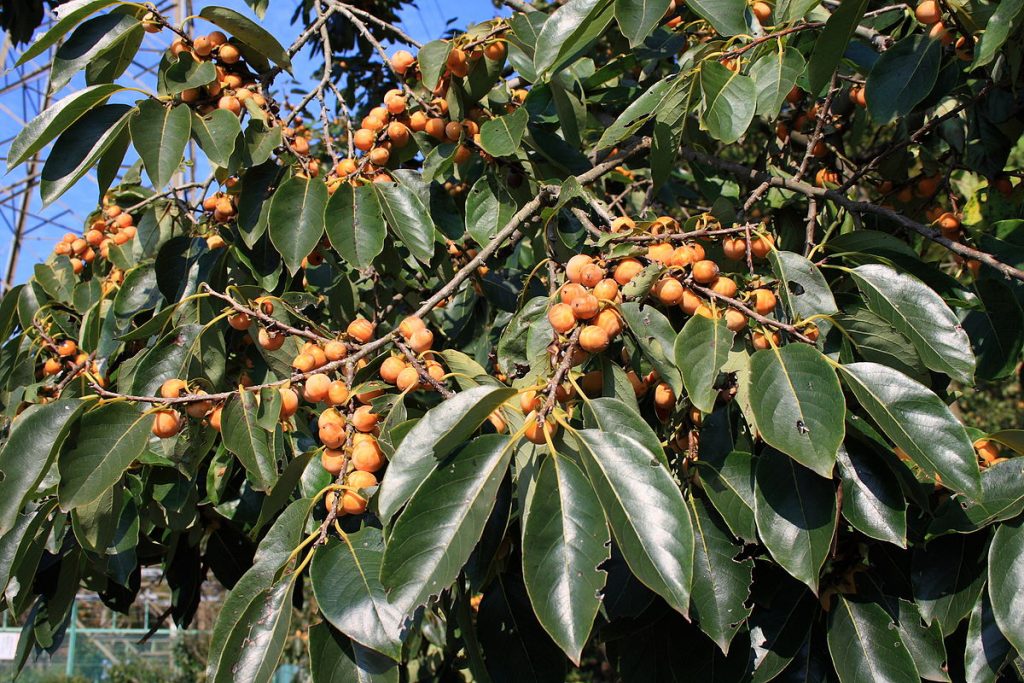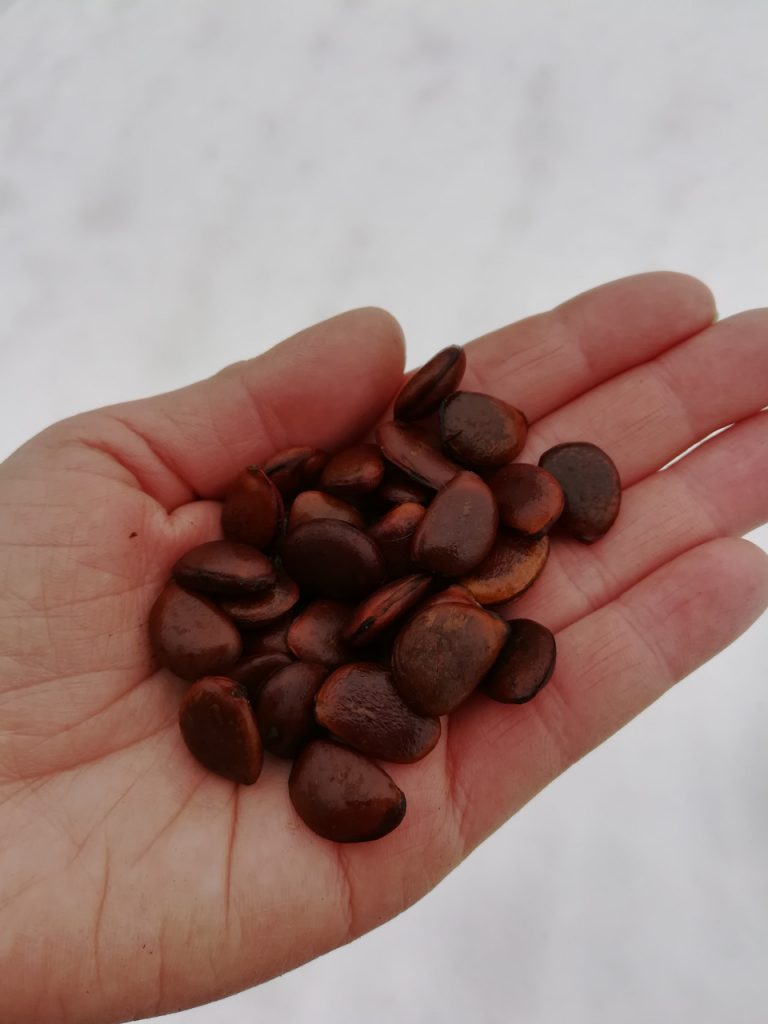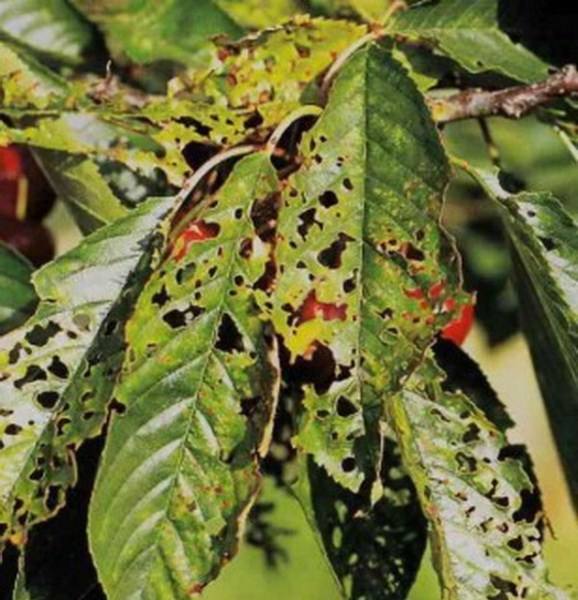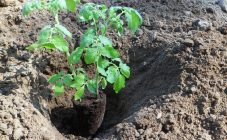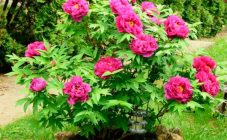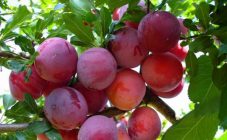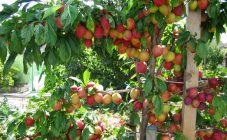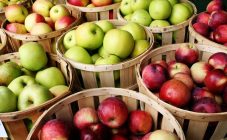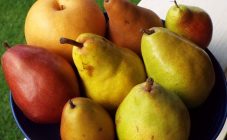Content:
Persimmon is popularly called the tomato tree. The sweet and healthy fruits that appear in stores at the beginning of winter are loved by both adults and children. Lovers of home exoticism tame this plant and even manage to harvest from it in an apartment. Only this is not so easy to do. The plant is distinguished by its freedom-loving disposition and is extremely reluctant to bear fruit in captivity. In addition, for these purposes, it is necessary to select exclusively self-pollinated varieties.
Basic information
Persimmon is also called ebony. This family has more than a thousand species, among which there are both deciduous and evergreen representatives. Their description indicates that their fruits are edible, and the plant itself lives up to 500 years. The crown of the tree is wide, resembling a ball from a distance. Leaves are ordinary, oval, classic green color.
It will be useful to know how persimmon grows in natural conditions and the history of its origin. Indochina is considered the birthplace of this plant. It is there that he can be found in the wild in the mountains. A climate with not very cold winters and not too hot summers is considered ideal. The tree does not tolerate a drop in temperature to -18 ° C. As a cultivated plant, persimmon began to be grown in Manchuria, and then appeared in Southeast Asia. In Russia, this plant can be found in regions such as Krasnodar Territory, Kuban. It also grows in the Caucasus. Breeders are tirelessly working on developing new varieties, the main trump card of which is increased frost resistance. This makes it possible to successfully grow persimmons even in the Rostov region.
Huge benefits are brought to the human body when eating delicious orange fruits. Thanks to them, the development of age-related neoplasms is delayed, free radicals are removed. With regular use of persimmon, the body naturally fights against the first signs of skin aging. In addition, the fruit is useful for the prevention of kidney stones, the development of cardiovascular diseases, staphylococcus. Diseases such as diarrhea are also treated with persimmon. It is used for the preparation of masks, and is also used as food for anemia and hypertension.
Plant characteristic
Persimmon is a tall tree, it grows up to 10 meters. In most cases, the tree is unisexual, but there are also bisexual species that do not require additional pollination. However, such trees produce seedless fruits. Persimmon leaves are large enough, glossy. According to them, you can say for sure that the plant belongs to the southern ones. Persimmon blooms quite late, as does the ripening of its fruits. Fruiting is abundant, but in the Caucasus, the fruits do not have time to ripen, ripening occurs in room conditions.
Persimmon is an amazing fruit, one fruit of which can reach a mass of 500 grams. Only a well-ripened specimen has true consistency and a pleasant sweet taste. When fully ripe, it acquires a brighter shade, but immature is characterized by a dull color and an unpleasant astringent taste.However, the persimmon variety Korolek is completely devoid of such a disadvantage. In fact, this species is of Japanese origin. In his homeland he is called Hyakume. After ripening, the fruit pulp acquires a chocolate hue.
Home persimmon is not just an indoor flower, but a very demanding plant that does not forgive mistakes for a novice florist. Before planting it, you must carefully study the theoretical material and the recommendations of experienced craftsmen. How does persimmon bloom, and when does it happen? A blossoming flower on a tree can be seen in May, but fruiting occurs around November. The plant makes high demands on temperature and lighting, but not capricious with respect to the soil. Subject to the conditions of agricultural technology, the yield from one tree is about 80 kg of useful and tasty fruits.
Characteristics of species and varieties
Homemade persimmon varieties differ from those growing in open ground, first of all, in that they are able not only to bloom, but also to form fruits in captivity. This variety should at least be self-pollinated. The Internet contains many recommendations for growing persimmons at home, but it is more worth listening to those that relate to the selected variety.
Persimmon of the Eastern species has the largest fruits. There are several varieties of it, including those suitable for indoor cultivation. Growing conditions and proper care have a significant impact on taste.
Persimmon variety Rossiyanka was bred in the Nikitsky Botanical Garden. Excellent for growing in our climate, it is productive. When growing in the house, it needs to be pinched and molded. The fruits are small, have a short shelf life. In the open field, this persimmon is cultivated in the Crimea. Planting and growing it is carried out even in private garden plots.
Persimmon varieties Virginskaya are grown mainly in America and are distinguished by a very tall tree, the height of which reaches 25 m. The color time is in the summer, but in the fall the fruits are ready for use. The plant quickly adapts to new climatic conditions.
Wild Caucasian persimmon by its external characteristics resembles an ordinary cherry. The tree reaches a height of 30 meters, the old bark on it crumbles over time. The fruits are small, their diameter does not exceed 2 cm.
The Mider variety is frost-resistant, self-fertile. It can bloom in early May, and in October the fruits begin to fully ripen. After ripening, persimmon acquires a rum aroma and a beautiful bright reddish color. Of the shortcomings, a tart taste is distinguished. It is grown in greenhouse conditions even in the valley of the Pingisha River.
There is another rather rare species of exotic plant, the fruits of which are colored black. It does not tolerate low temperatures, but the fruit has an excellent sweet taste and unusual color.
Landing features
If what is persimmon is more or less clear, then how to grow it is not quite.
The seeds should be removed from the pulp, rinsed with running water and allowed to dry. Then they are left for a day in a weak solution of potassium permanganate, and those specimens that float to the surface are immediately thrown away. Sand the hard edges near the stone with sandpaper so that the sprout of the young persimmon can easily hatch.After that, the seed is treated with a growth stimulant, wrapped in wet gauze and cellophane and sent to the bottom shelf of the refrigerator.
A seedling should be planted at the end of winter or at the very beginning of spring. Before growing your own persimmon, you need to pick up a medium-sized flower pot and fill it with a mixture of peat and river sand. Lay a layer of vermiculite on the bottom. The seed is placed on the edge in the prepared soil, deepening it by no more than a couple of centimeters. After that, the pot is covered with cellophane and sent to a well-lit place with a temperature of about + 22 ° C. Before the emergence of shoots, the earth, as it dries, must be watered. To prevent decay, the shelter is sometimes opened slightly for ventilation.
Seedlings may appear a month after planting the seed. During this period, the seedling is placed in a well-lit place, but do not allow direct sunlight. In order for it to start growing faster, it is recommended to feed it with a nitrogen-containing fertilizer.
Care
As soon as the young bush gets stronger, it is immediately placed in a separate pot or planted in open ground (if the climate permits). In the latter case, a glass cover is put on the seedling, which will protect against possible spring frosts. The shelter must be lifted regularly and condensation removed.
When grown in indoor conditions, the growth point of persimmons must be pinched. Subsequently, crown formation may also be required.
As a true southerner, persimmon is very fond of moisture. The shrub, in addition to watering at the root, also requires spraying the leaves. Irrigate them with water at room temperature. In order to prevent waterlogging and prevent excess evaporation of moisture, it is advisable to mulch the soil. In winter, the tree is watered a couple of times per season.
Persimmon does not like feeding with heavy organic matter. She is more interested in mineral fertilizers, as well as agave juice diluted in water. Why does persimmon sometimes shed the fruit ovary? This may be affected by the lack of phosphorus and potassium in the soil. It is these microelements that are essential for a successful harvest.
In winter, the light should be diffused and dim. The air temperature in the room is maintained at + 20-22 ° С; for an adult plant, a decrease in this indicator to + 15 ° С is permissible. In no case should drafts be allowed. In winter, the temperature is lowered to + 5 ° C.
If there is a desire to grow a hybrid persimmon variety, then you will have to face several more problems. It will not be possible to get a full-fledged plant with identical characteristics of the mother plant from the seed, so it will be necessary to make a scion.
Major diseases and pests
When grown in apartment conditions, persimmon is almost not exposed to pests and pathogens.
But in the open field, the tree is affected:
- scab;
- gray rot;
- powdery mildew;
- black spot;
- bacterial cancer;
- gray rot.
An Arab guest like a persimmon needs mandatory preventive measures:
- timely sanitary pruning;
- taking the plant pot out into the fresh air;
- ensuring a sufficient level of lighting;
- moderate watering without waterlogging.
In apartment conditions, persimmons can be attacked by scale insects or spider mites. They fight them with folk methods: once a week, the leaves are washed with soapy water, and a day after this procedure, they are rinsed in the shower.
A healthy and tasty orange berry, which flaunts on store shelves with the onset of cold weather, can be grown at home. Breeders are constantly working and trying to adapt persimmons to different climates in order to enable residents of different regions to grow this crop not only on the windowsill, but in their own garden. Of course, growing persimmons at home makes you face certain difficulties. However, it's worth it. Subject to the rules of agricultural technology, the tree will not only give a generous harvest, but also become an excellent decorative decoration.



